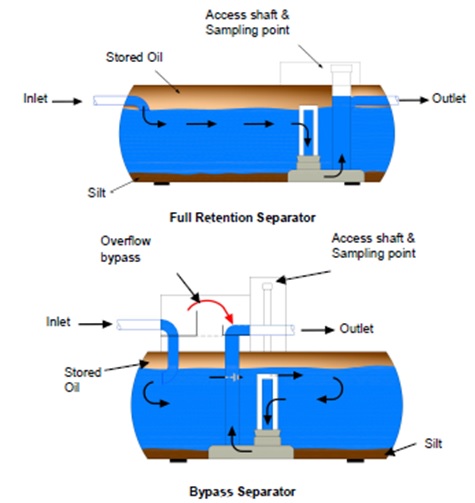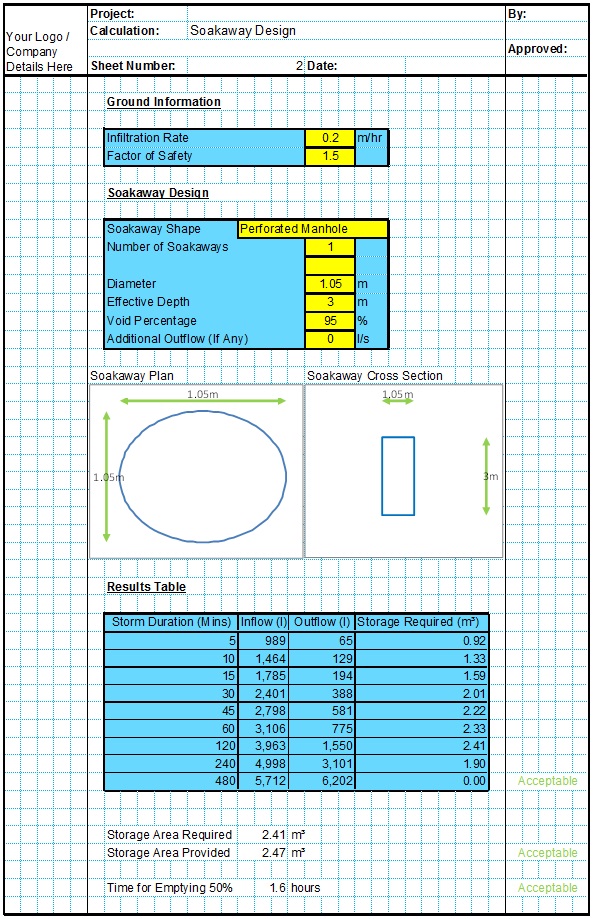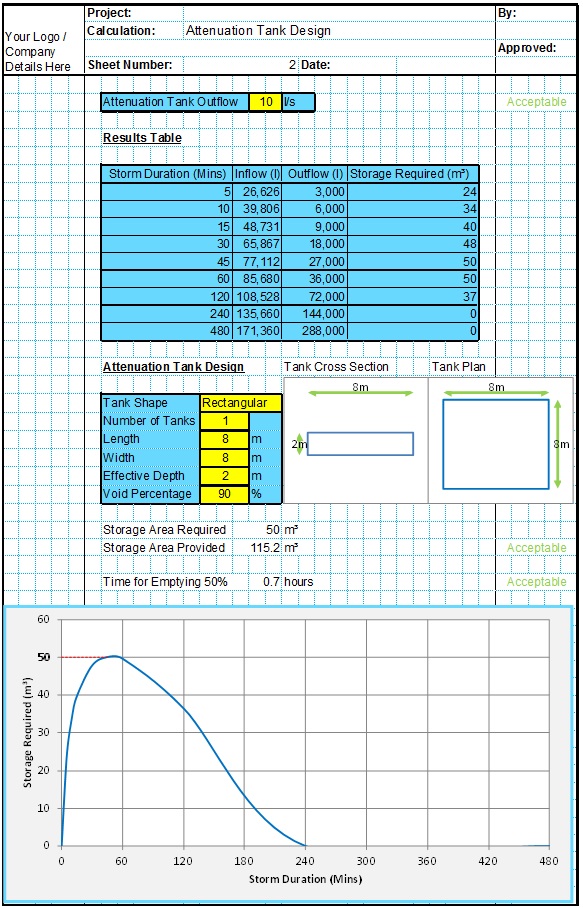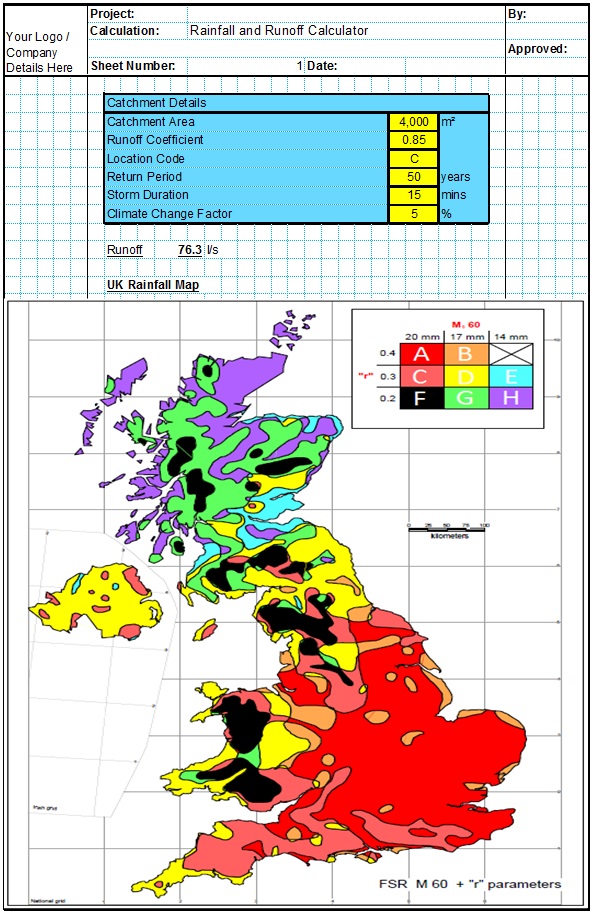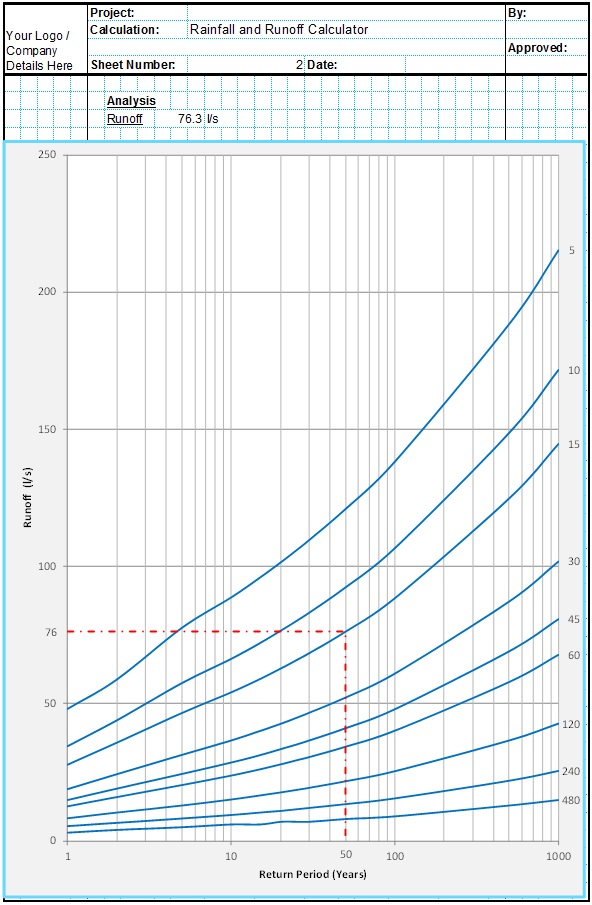As soakaways dispose of runoff by infiltrating it into the surrounding soils and ultimately the groundwater, the runoff passing through a soakaway must not be contaminated with anything which can contaminate the groundwater. This includes oils, fuels and other hazardous chemicals. These contaminants must be prevented from reaching the soakaway.
One common method of preventing oils, fuels and other lighter than water chemicals is to pass all runoff through a gravity separator before it enters the soakaway. A gravity separator works by allowing the unwanted chemicals to float to the top of the clean water which is then allowed to discharge from the bottom. A diagram illustrating this is shown below;
Gravity separators must be included anywhere where the runoff may include significant risks of contamination by fuels or oils. This includes industrial car parks and lorry parks and maintenance areas, forecourts and major roads.
Gravity separators will not be effective for removing dissolved or emulsified contaminants such as coolants, lubricants or alcohols. Ideally the separator should be installed as close as possible to the source of contamination to minimise the emulsification of oils and their coating of suspended sediments.
Gravity separators are usually purchased as proprietary systems, though they can be built in-situ if required. Many different sizes and configurations are available to suit most applications. They should be specified according to the required volume of separated oil storage, the required volume of sediment storage and a required volume of water runoff.
Proprietary systems should be specified and installed in accordance with the manufacturer’s instructions. Care must be taken that the unit is designed to accommodate any buoyancy forces caused by high groundwater levels. The manufacturer will generally require that the separator is filled with clean water during or after installation to ensure that it functions correctly.
Types of Separator
There are two classes of separator by outflow quality, Class 1 which allows 5mg/l outflow hydrocarbon content and Class 2 which allows 100mg/l outflow hydrocarbon content. A Class 1 separator is required for soakaways, Class 2 separators are designed to suit outflows to foul sewers.
There are a further three types of separator. A Full Retention separator is designed to treat the full flow from the design storm event. A Bypass Separator is designed are limited to treating flows up to a required flow rate, with larger storm events allowed to pass through. This is based on the theory that a large spill or contamination event is unlikely to occur at the precise moment of a large storm event, and any smaller contaminations will be diluted by the large volume of rainfall runoff. The third type is a Forecourt Separator which is designed to include a large contaminant storage volume. These separators are designed to accommodate the spillage of an entire road tanker compartment of fuel. These are required only on forecourts or other areas where large amounts of fuel are stored or where deliveries are made.
The separator is usually installed below ground so there is very little space used on the surface. They can however be several metres long and must be assessed if heavy loads are expected on the surface above them. They also require access from a small tanker for emptying and maintenance.
Maintenance
Frequent routine maintenance is required to ensure that the separator does not become full with either settled sediments or separated fuels. All new systems now include alarms which advise when the system is full and needs to be emptied. If regular maintenance is not done the separator will allow oils to outflow into the soakaway. As this process happens entirely underground, it is essential that maintenance is done in a timely manner and the alarms are situated where they can be seen. Removal of waste oils and sediments must be undertaken in accordance with the manufacturer’s instructions and in accordance with the relevant waste management regulations.
A typical 6 monthly maintenance schedule should include;
- Check volume of sediments
- Check volume of light liquids
- Check that the alarm is working
- Empty if required
- Check coalescing material if appropriate
- Check that separator is filled with water following waste removal
A full inspection of the separator integrity should be undertaken at least every 5 years. This should include;
- Check the separator watertightness
- Check the separator structural condition and integrity
- Check any internal coatings
- Check internal parts
- Check electrical devices
- Check automatic closure devices
Related Spreadsheets from CivilWeb;
Soakaway Design Spreadsheet
This spreadsheet calculates the requirements for a soakaway system and assists the user to design a suitable system.
Attenuation Design Spreadsheet
This spreadsheet calculates the requirements for a attenuation system and assists the user to design a suitable system.
Runoff Calculator Spreadsheet
This spreadsheet calculates the design runoff flow for a site in accordance with the a number of different methods including the Wallingford Procedure.
Full Drainage Design Suite
Full drainage design suite (50% Discount) including 7 spreadsheets;
- Colebrook White Pipe Design
- Manning Pipe Design
- Manning Open Channel Design
- Linear Drainage Design
- Runoff Calculator
- Attenuation Design
- Soakaway Design
